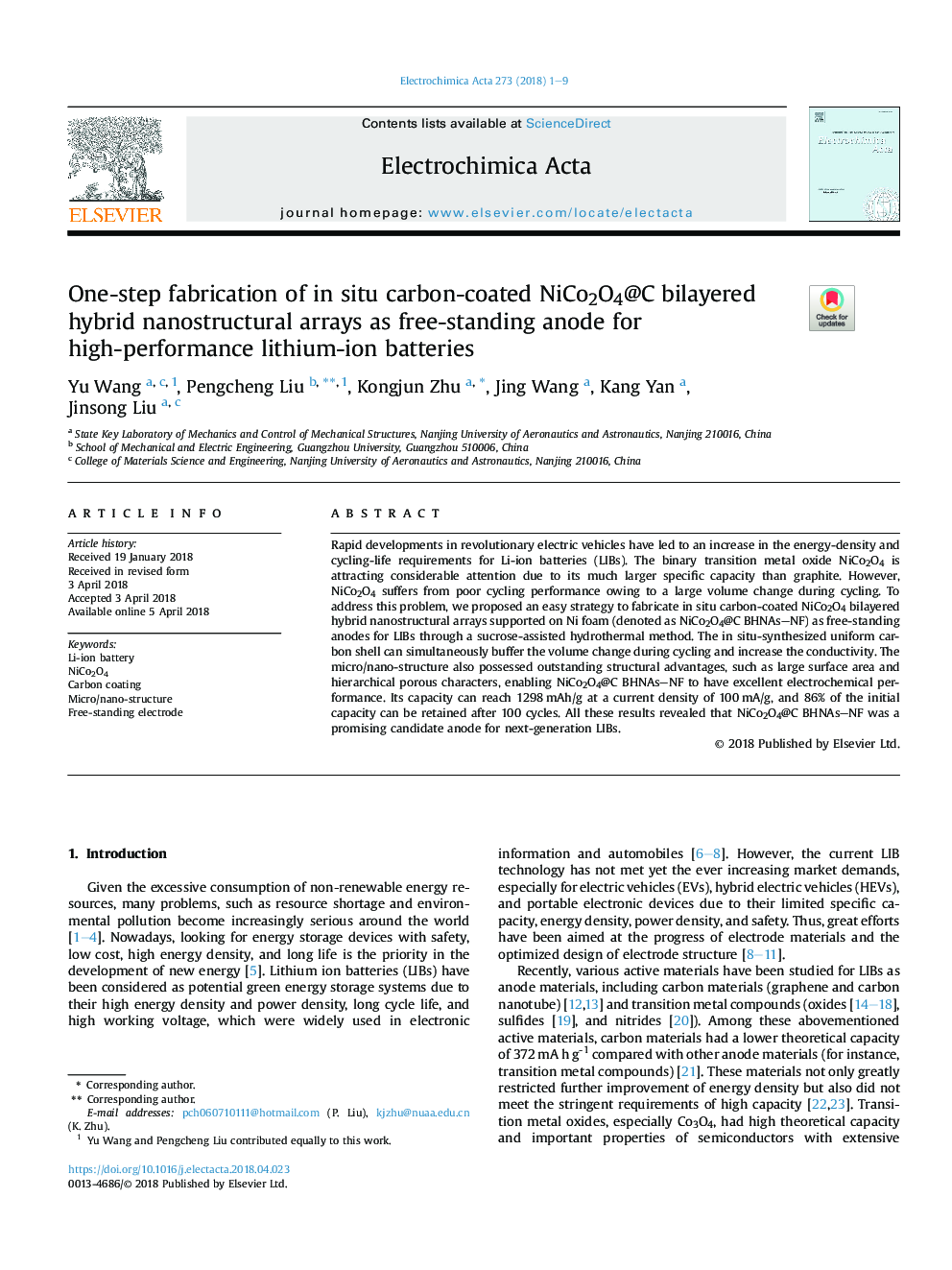| Article ID | Journal | Published Year | Pages | File Type |
|---|---|---|---|---|
| 6602964 | Electrochimica Acta | 2018 | 9 Pages |
Abstract
Rapid developments in revolutionary electric vehicles have led to an increase in the energy-density and cycling-life requirements for Li-ion batteries (LIBs). The binary transition metal oxide NiCo2O4 is attracting considerable attention due to its much larger specific capacity than graphite. However, NiCo2O4 suffers from poor cycling performance owing to a large volume change during cycling. To address this problem, we proposed an easy strategy to fabricate in situ carbon-coated NiCo2O4 bilayered hybrid nanostructural arrays supported on Ni foam (denoted as NiCo2O4@C BHNAs-NF) as free-standing anodes for LIBs through a sucrose-assisted hydrothermal method. The in situ-synthesized uniform carbon shell can simultaneously buffer the volume change during cycling and increase the conductivity. The micro/nano-structure also possessed outstanding structural advantages, such as large surface area and hierarchical porous characters, enabling NiCo2O4@C BHNAs-NF to have excellent electrochemical performance. Its capacity can reach 1298â¯mAh/g at a current density of 100â¯mA/g, and 86% of the initial capacity can be retained after 100 cycles. All these results revealed that NiCo2O4@C BHNAs-NF was a promising candidate anode for next-generation LIBs.
Related Topics
Physical Sciences and Engineering
Chemical Engineering
Chemical Engineering (General)
Authors
Yu Wang, Pengcheng Liu, Kongjun Zhu, Jing Wang, Kang Yan, Jinsong Liu,
